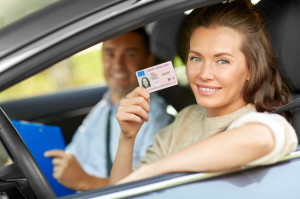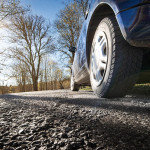 Ah, the memories of Driver’s Ed. The awkwardness of learning to drive, sitting behind the wheel of your parents’ old clunker, and trying to master the art of changing lanes without jerking the car into the next lane. It feels like a lifetime ago, right? Yet, even though we’ve long since passed the awkward stage of our driving education, some of those important lessons may have faded over time.
Ah, the memories of Driver’s Ed. The awkwardness of learning to drive, sitting behind the wheel of your parents’ old clunker, and trying to master the art of changing lanes without jerking the car into the next lane. It feels like a lifetime ago, right? Yet, even though we’ve long since passed the awkward stage of our driving education, some of those important lessons may have faded over time.
Every time we get behind the wheel, our inner voice often echoes some of the tips our Driver’s Ed instructors shared. You know the ones—those lessons that seemed too basic or unnecessary at the time but are actually essential to safe driving. If you haven’t heard them in a while, now’s the time for a quick refresher. Whether you’re a seasoned driver or someone who’s been on the road for a few years, it never hurts to revisit some of the fundamental rules that ensure both your safety and the safety of others on the road.
1. Use the Three-Second Rule
One of the first things most Driver’s Ed teachers teach you is the three-second rule for maintaining a safe distance between your car and the vehicle in front of you. It may seem like a simple guideline, but it’s one of the most effective ways to prevent rear-end collisions.
To follow the rule, pick a stationary object on the road, such as a sign or a tree. When the car in front of you passes it, start counting “one thousand and one, one thousand and two, one thousand and three.” If you pass that same object before you finish counting, you’re too close. This gives you enough time to react if the vehicle ahead suddenly brakes or makes an unexpected maneuver. Remember, tailgating doesn’t make other drivers speed up—it only increases your risk of an accident.
2. Don’t Slam on the Brakes During a Blowout
We’ve all seen the scenario in movies: a tire blows out, and the driver instinctively slams on the brakes, causing the car to swerve out of control. In real life, this can be a dangerous reaction.
If you ever experience a blowout, resist the urge to brake hard. Instead, keep your foot gently on the accelerator and maintain a firm grip on the steering wheel to keep control of the vehicle. Gradually slow down by easing off the accelerator. Once you’ve slowed to a safe speed, carefully maneuver your car to the side of the road. Don’t forget to turn on your emergency flashers to alert other drivers. Slamming on the brakes during a blowout can lead to loss of control, making a bad situation even worse.
3. Adjust Your Seat and Mirrors
Before you even start the engine, take a moment to adjust your seat and mirrors. Your seat should be positioned so that you can comfortably reach the pedals and have clear visibility out of all windows. Adjust your mirrors so you can see around your car without straining your neck or eyes. Taking a few extra seconds to ensure these settings are just right can help you avoid distractions once you’re on the road. Proper seat and mirror adjustments also improve your reaction time in case of an emergency, as you’ll have the best possible view of your surroundings.
4. Always Use Your Turn Signal
Using your turn signal is one of those habits that many drivers forget, especially when they think no one is around to see it. However, signaling your intentions is a key part of safe driving, even if you’re driving alone on an empty road. Whether you’re turning, changing lanes, or merging, always signal your intentions to other drivers. It’s a simple courtesy that can prevent accidents, and it’s the law. It’s easy to forget, but when you make signaling a habit, it becomes second nature.
5. Make Complete Stops
In Driver’s Ed, you probably remember your instructor’s insistence on coming to a complete stop at stop signs. This rule might seem unnecessary at times, especially when the intersection appears empty, but failing to make a full stop can have serious consequences. Rolling through a stop sign, even slowly, could result in a moving violation and, worse, could cause a collision with another vehicle or pedestrian that you didn’t see.
A good rule of thumb is to count “1-2-3” after you stop at a stop sign to ensure you’ve come to a full stop. This extra moment can make a difference in preventing accidents and avoiding traffic tickets.
6. Use Your Lights Properly
Knowing when and how to use your headlights is another lesson that’s crucial for safety. Here’s a quick refresher:
High beams: Use them when there are no oncoming vehicles or when you’re on an empty road at night. Just be sure to dim them at least 500 feet before passing another vehicle.
Low beams: These are for when you’re driving in traffic or during poor weather conditions, such as rain, snow, or fog. Low beams improve visibility without blinding other drivers.
Parking lights: Don’t use parking lights while driving—only use them when your car is parked.
Proper use of your headlights can greatly improve visibility for you and other drivers, especially in low-light conditions.
7. Always Buckle Up
One of the most important rules you learned in Driver’s Ed was to always wear your seatbelt. While this might seem like a no-brainer, it’s still a habit worth reinforcing. Studies show that seatbelts reduce the risk of death in a crash by about 45%. No matter how short the trip or how familiar the road, never skip this step.
Make it a habit to buckle up before starting your car. Remember, no excuse is more important than your safety—and seatbelts are the easiest, most effective safety feature in your car.
Stay Safe, Stay Smart
While some of these tips may seem basic or even obvious, it’s easy to forget them once we get used to the daily routine of driving. However, each of these simple steps can make a big difference when it comes to preventing accidents and ensuring that everyone gets to their destination safely.
Whether you loved Driver’s Ed or dreaded it, the fundamental lessons it taught you should stay with you throughout your driving career. Taking just a few extra seconds to follow these guidelines—maintaining a safe distance, using your turn signal, ensuring proper seat and mirror adjustments, and staying alert to tire issues—could help you avoid accidents and keep you and your passengers safe on the road. So, next time you get behind the wheel, take a moment to remember the basics. After all, safe driving never goes out of style.








